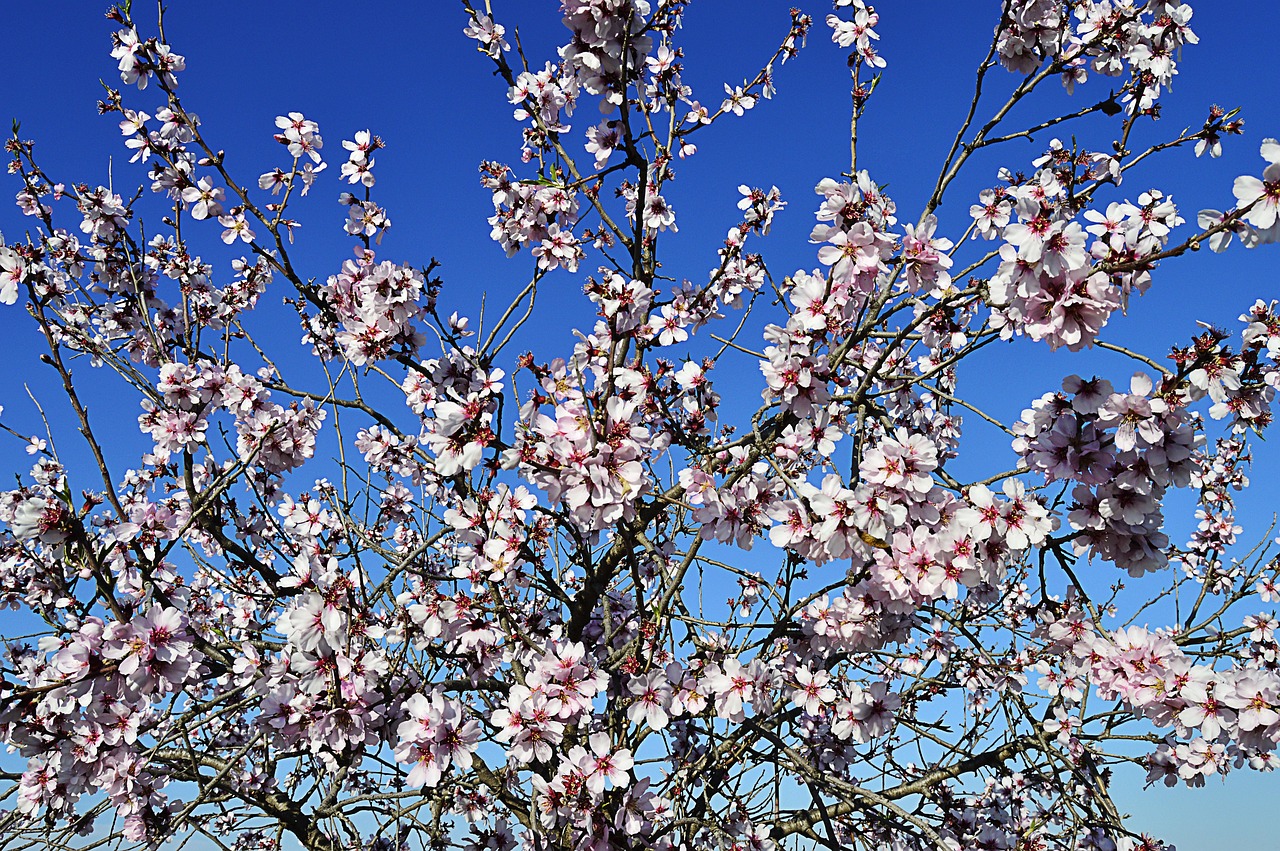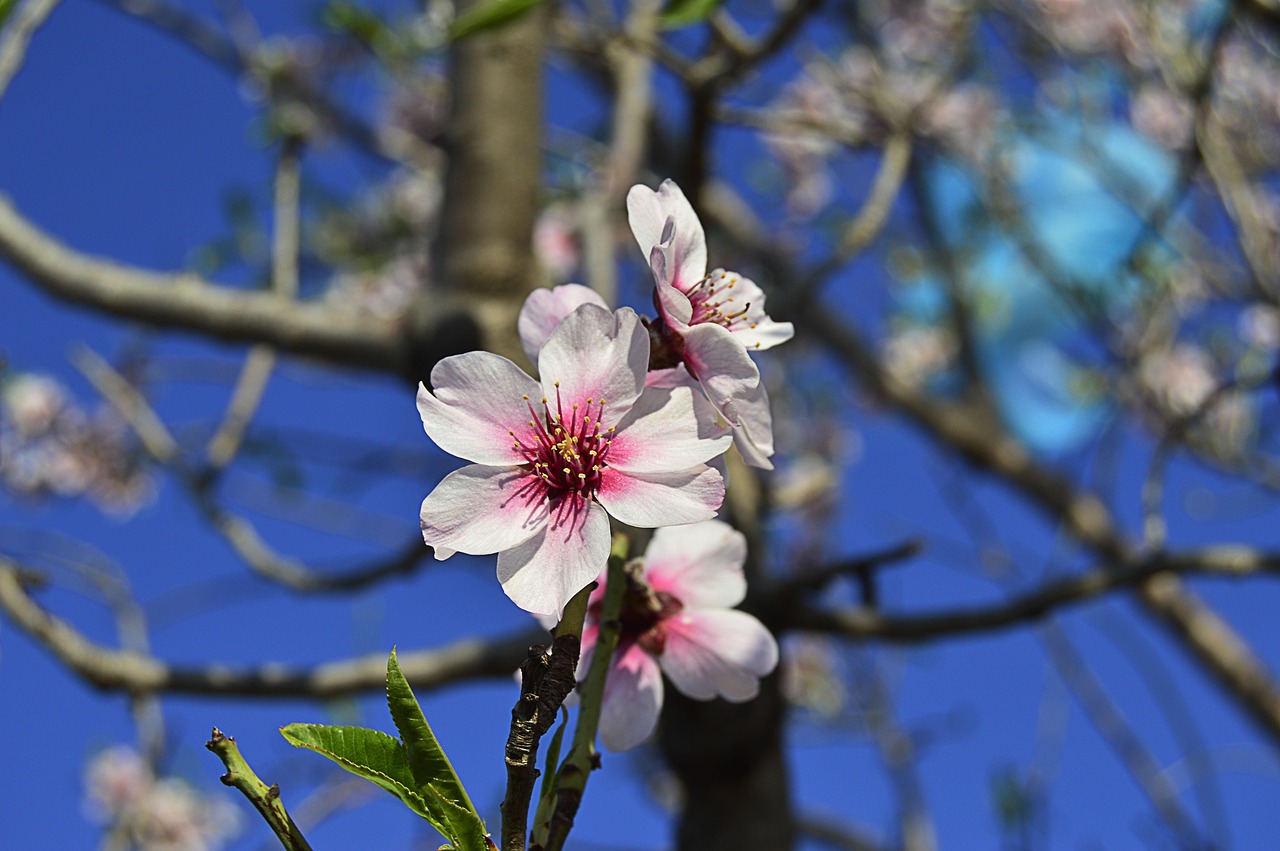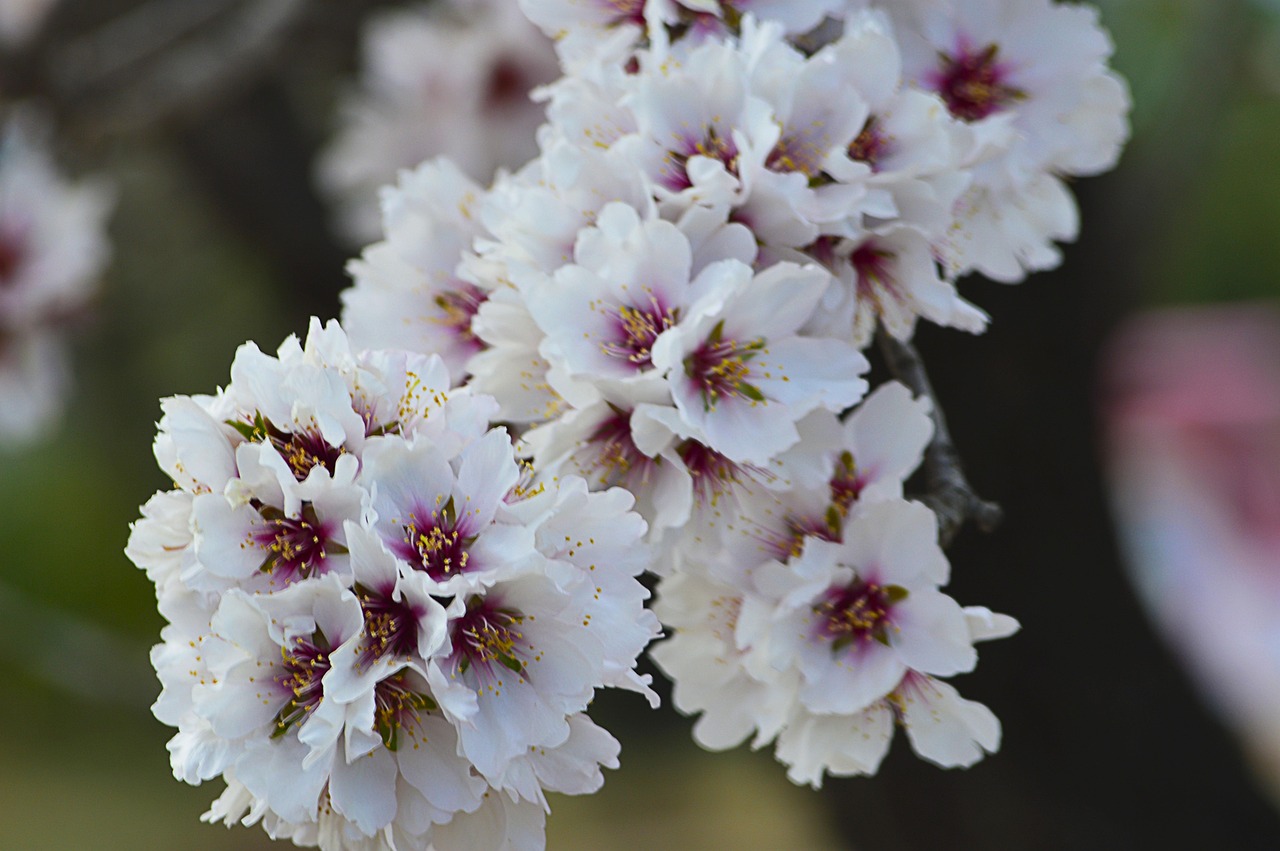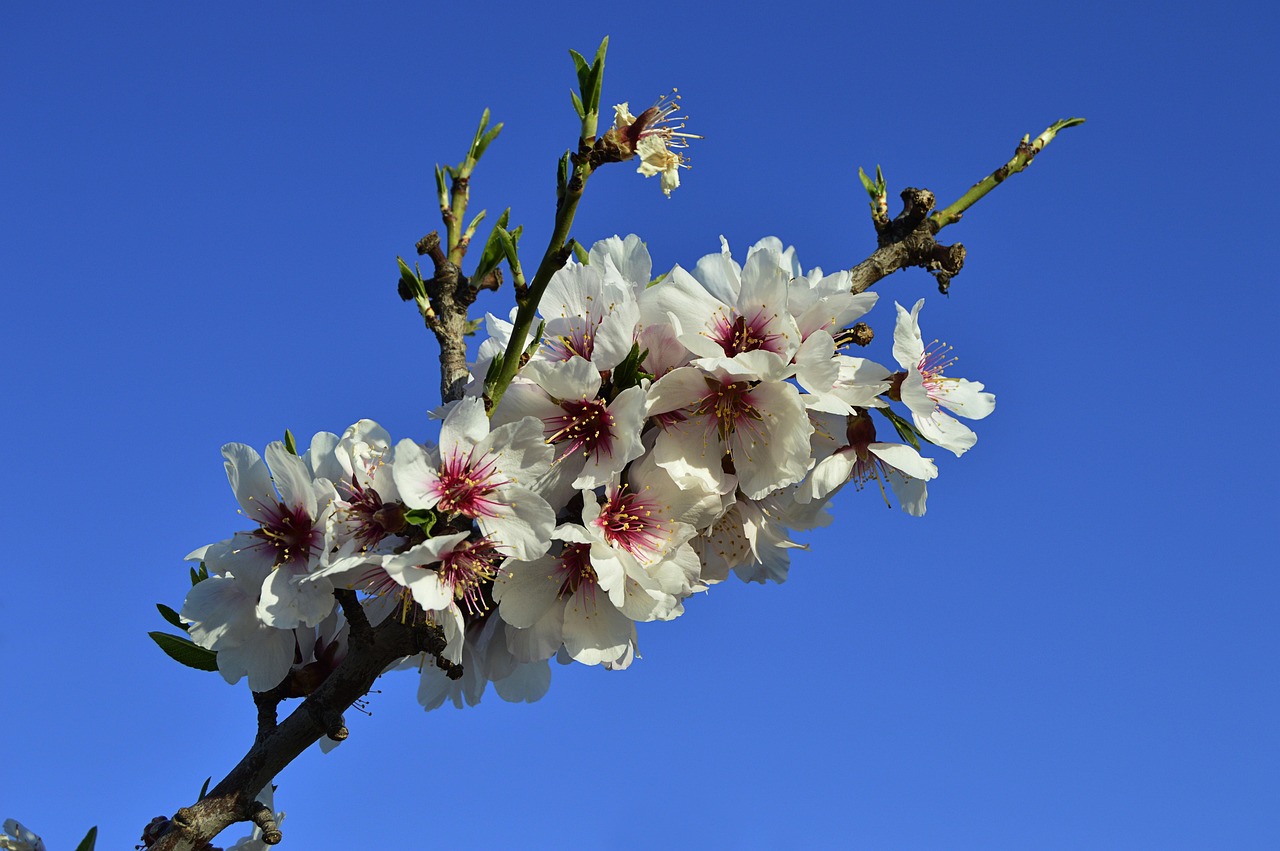Pruning flowering almond trees effectively maximizes blooms by removing dead or overcrowded branches, ensuring light penetration and air circulation. The best time to prune is in late winter or early spring before new growth begins.
Flowering almond trees are cherished for their stunning spring blooms and attractive foliage. These small to medium-sized trees, belonging to the genus Prunus, are often used in landscaping for their aesthetic appeal. They are notable for their showy pink or white flowers that create a beautiful display, attracting pollinators and adding charm to gardens and parks.

Proper care and maintenance play a crucial role in enhancing the blooming potential of flowering almond trees. Among these care practices, pruning stands out as a significant task. Pruning not only helps in managing the tree’s shape and size but also promotes healthy growth by removing dead or diseased branches. This practice can significantly influence the amount and quality of blooms produced each season.
Understanding the Flowering Almond Tree
The flowering almond tree is native to various regions, including Asia and parts of Europe. It thrives in well-drained soil and prefers full sun exposure. Understanding its growth habits, flowering patterns, and requirements is essential for effective pruning.
Typically, flowering almond trees grow to a height of 10 to 15 feet with a similar spread. They produce blossoms in early spring, usually before the leaves emerge. This early blooming period is vital for attracting bees and other pollinators, which are essential for fruit set in some varieties.

Here are some key characteristics of flowering almond trees:
| Characteristic | Description |
|---|---|
| Height | 10 to 15 feet |
| Spread | 10 to 15 feet |
| Bloom Time | Early spring |
| Flower Color | Pink or white |
| Sun Requirement | Full sun |
| Soil Type | Well-drained soil |
Understanding these characteristics helps gardeners and homeowners create an environment conducive to the tree’s health and productivity. When properly cared for, flowering almond trees can be a long-lasting addition to any landscape.
The Importance of Pruning
Pruning serves several purposes that are beneficial for flowering almond trees. First, it helps remove any dead or diseased wood that can harbor pests or diseases. Second, it encourages new growth by allowing sunlight to reach the inner branches. This exposure is essential for photosynthesis and overall tree health.

Another significant benefit of pruning is the enhancement of airflow throughout the tree. Improved airflow reduces the risk of fungal infections, which can thrive in damp, crowded conditions. Additionally, pruning can help maintain the desired shape and size of the tree, making it more aesthetically pleasing in a garden setting.
When to Prune Flowering Almond Trees
The timing of pruning is crucial for the health and blooming capacity of flowering almond trees. The best time to prune is during late winter to early spring, just before new growth starts. This timing allows for maximum flower production without disrupting the blooming cycle.
If pruning occurs too late in the season, it may result in fewer flowers because the tree will focus on healing rather than producing blooms. Conversely, if done too early or during active growth, it can lead to unnecessary stress on the tree.

Types of Pruning Cuts
Understanding the types of pruning cuts is essential for effective pruning practices. There are three primary types of cuts used when pruning flowering almond trees:
- Thinning Cuts: These cuts remove entire branches at their point of origin. Thinning helps improve airflow and light penetration within the tree.
- Heading Cuts: These cuts shorten branches by removing a portion of the stem. Heading cuts encourage bushier growth and can stimulate flowering on lateral buds.
- Clean-Up Cuts: These cuts remove dead or diseased wood, promoting healthier overall growth and reducing disease risk.
Each type of cut serves a purpose in achieving the desired shape and health of the flowering almond tree. By applying these techniques correctly, gardeners can significantly enhance their trees’ blooming potential.
Tools Needed for Pruning
Having the right tools is crucial for effective pruning of flowering almond trees. Using appropriate equipment not only makes the task easier but also ensures clean cuts that promote healing. Here are some essential tools needed for this task:
- Bypass Pruners: Ideal for making clean cuts on small branches. These scissors-like tools are perfect for precise cuts.
- Loppers: These are used for larger branches that are too thick for bypass pruners. Loppers provide leverage and a longer reach.
- Hand Saw: For branches that are too large for loppers, a hand saw is necessary. It allows for controlled cutting of thicker branches.
- Hedge Shears: These are useful for shaping and trimming smaller branches and foliage to maintain the desired form of the tree.
- Protective Gear: Gloves, safety glasses, and sturdy footwear should be worn to protect against potential injuries while pruning.
Ensuring that all tools are sharp and clean is vital. Dull tools can tear the bark and harm the tree, while clean tools help prevent the spread of diseases.
Pruning Techniques for Flowering Almond Trees
Once you have the right tools, it is important to employ effective pruning techniques to maximize blooms. Below are some recommended techniques that can be used when pruning flowering almond trees:
1. Start with an Assessment
Before making any cuts, take time to assess the tree’s structure and health. Look for:
- Dead or diseased branches that need removal.
- Crossing branches that may rub against each other, causing damage.
- Branches that are overcrowded or growing inward, restricting airflow.
2. Make Strategic Cuts
Focus on making cuts that will open up the tree’s center. This can help promote healthy growth and maximize blooming potential. Follow these guidelines:
- Begin with thinning cuts to remove crowded branches, ensuring to cut back to the branch collar.
- Use heading cuts sparingly on younger plants to encourage bushier growth.
- Aim to maintain a balanced structure by removing competing leaders and ensuring symmetry.
3. Clean Up After Pruning
After pruning, it is essential to clean up any debris left on the ground. This helps reduce the risk of attracting pests and diseases. Additionally, inspect the tree again to ensure all necessary cuts were made, and no tools were left behind.
Common Mistakes to Avoid When Pruning
Even experienced gardeners can make mistakes when pruning flowering almond trees. Being aware of common pitfalls can lead to better practices and healthier trees. Here are some mistakes to avoid:
- Pruning at the Wrong Time: Avoid pruning during fall or summer as it can disrupt the blooming cycle or expose the tree to stress.
- Over-Pruning: Removing too many branches can weaken the tree and reduce bloom production. Always aim for a balanced approach.
- Ignoring Tree Health: Failing to check for diseases or pests before pruning can lead to spreading issues throughout the tree.
- Poor Cutting Technique: Making jagged cuts or leaving large stubs can harm the tree. Always aim for clean, angled cuts that promote healing.
Enhancing Bloom Production Through Care
The health of a flowering almond tree greatly influences its blooming capacity. In addition to pruning, several care practices can enhance flower production:
1. Watering Practices
Flowering almond trees require consistent moisture, especially during dry periods. Ensure they receive adequate water without becoming waterlogged. A deep watering method encourages deeper root growth.
2. Fertilization
Applying a balanced fertilizer in early spring can bolster growth and improve flower quality. Look for fertilizers with equal parts nitrogen, phosphorus, and potassium to support both foliage and blooms.
3. Mulching
A layer of mulch around the base of the tree helps retain moisture, suppress weeds, and regulate soil temperature. Organic mulch breaks down over time, enriching the soil with nutrients.
4. Pest and Disease Management
Regularly inspect flowering almond trees for signs of pests such as aphids or diseases like powdery mildew. Implementing an integrated pest management approach can keep trees healthy and productive.
| Caring Aspect | Description |
|---|---|
| Watering | Consistent moisture without overwatering; deep watering is ideal. |
| Fertilization | Balanced fertilizer application in early spring for growth support. |
| Mulching | Organic mulch helps retain moisture and enriches soil. |
| Pest Management | Regular inspections and integrated pest management practices. |
By combining proper pruning techniques with these care practices, gardeners can create an environment where flowering almond trees thrive and produce abundant blooms each year.
Seasonal Care for Flowering Almond Trees
Seasonal care is vital for the health and blooming of flowering almond trees. Each season presents unique challenges and opportunities for tree maintenance. Understanding how to care for these trees throughout the year can significantly impact their performance.
Spring Care
Spring is a crucial time for flowering almond trees as they begin to emerge from dormancy. Here are some essential spring care tasks:
- Pruning: Early spring is the ideal time for pruning to shape the tree and remove any dead or diseased wood before new growth begins.
- Fertilization: Apply a balanced fertilizer to encourage vigorous growth and flowering. This should be done after the last frost and before new buds open.
- Watering: As temperatures rise, ensure the tree receives adequate moisture, especially if rainfall is scarce.
- Pest Inspection: Check for signs of pests like aphids or spider mites. Early detection allows for timely intervention.
Summer Care
During the summer months, flowering almond trees require consistent attention. Key care practices include:
- Watering: Continue to water deeply, especially during hot spells. Deep watering encourages strong root development.
- Mulching: Apply mulch to retain moisture and suppress weeds. This helps maintain soil temperature and moisture levels.
- Pest Monitoring: Regularly check for pests. If infestations occur, implement integrated pest management strategies promptly.
- Deadheading: Remove spent flowers to encourage new blooms and improve the tree’s overall appearance.
Fall Care
As fall approaches, preparations for winter become essential. Fall care tasks include:
- Fertilization: A light application of fertilizer can help prepare the tree for winter dormancy.
- Watering: Ensure the tree is well-watered before the ground freezes. This aids in hydration during winter months.
- Pruning: Avoid heavy pruning in fall, but remove any dead or damaged branches to prevent potential issues in winter.
- Pest Control: Inspect the tree for any lingering pests and treat accordingly to prevent them from overwintering.
winter Care
Winter can be a challenging time for flowering almond trees. Proper care during this season is essential to their survival:
- Protection from Cold: In regions with harsh winters, consider wrapping young trees with protective materials to shield them from freezing temperatures.
- Irrigation: If there is a dry winter, ensure the tree remains hydrated by watering as needed until the ground freezes.
- Pest Inspection: Check for signs of pests that may have survived the winter. Early detection allows for appropriate action.
Common Pests and Diseases Affecting Flowering Almond Trees
Flowering almond trees can be susceptible to various pests and diseases that may affect their health and flowering capacity. Understanding these threats is crucial for effective management.
Pests
Several pests can harm flowering almond trees, including:
- Aphids: These small insects suck sap from leaves, causing curling and yellowing. They can also transmit diseases.
- Spider Mites: These tiny pests create webbing on leaves and can lead to leaf drop. Regular monitoring is essential.
- Scale Insects: These pests attach themselves to branches and leaves, sucking sap and weakening the tree.
Diseases
Diseases can also pose significant threats to flowering almond trees. Common diseases include:
- Powdery Mildew: This fungal disease appears as white powder on leaves and can hinder photosynthesis, affecting growth.
- Crown Gall: A bacterial disease that causes galls or tumors on roots and stems, weakening the plant over time.
- Bacterial Blight: This disease causes dark lesions on leaves and twigs, leading to defoliation and dieback.
Treating Pests and Diseases
Effective management of pests and diseases is vital for maintaining healthy flowering almond trees. Here are some treatment options:
Pest Control Methods
Pest control can be approached through several methods:
- Cultural Practices: Maintain good air circulation and avoid overcrowding to reduce pest populations.
- Natural Predators: Encourage beneficial insects like ladybugs that feed on aphids and other pests.
- Pesticides: Use insecticidal soaps or neem oil for effective pest control while being mindful of beneficial insects.
Disease Management Techniques
Disease management strategies include:
- Cultural Controls: Ensure proper spacing between trees to enhance airflow and reduce humidity around foliage.
- Fungicides: Apply fungicides at the first sign of fungal diseases like powdery mildew. Follow label instructions carefully.
- Sanitation: Remove and destroy infected plant material to prevent the spread of disease.
By implementing these seasonal care practices along with effective pest and disease management, gardeners can ensure their flowering almond trees remain healthy and produce vibrant blooms year after year.
Maximizing the Beauty of Flowering Almond Trees
Flowering almond trees are not just a delight to the eye; they also contribute to the ecosystem by attracting pollinators and providing shade. To maximize their beauty and health, consistent care and attention are essential. Throughout the year, gardeners should remain vigilant and proactive in their approach.
One important aspect of caring for flowering almond trees is understanding their growth habits. These trees can sometimes be prone to overgrowth, leading to a dense canopy that can inhibit light penetration. This scenario can result in fewer blooms and a less healthy tree overall. Regular pruning helps maintain an open structure, allowing sunlight to reach all parts of the tree.
Advanced Pruning Techniques
For those looking to refine their pruning skills further, there are advanced techniques that can enhance the blooming potential of flowering almond trees:
1. Renewal Pruning
This technique involves removing older branches and encouraging new growth from the base of the tree. By selectively cutting back older branches, you can stimulate fresh shoots that are more likely to produce vibrant blooms. This method is particularly effective for established trees that may have become leggy over time.
2. Espalier Techniques
Espaliering is a method of training trees to grow flat against a wall or trellis. This technique can be used on flowering almond trees to create unique visual interest in your garden. Regular pruning is essential in this method to maintain the desired shape and promote blooming along the trained branches.
3. Seasonal Shaping
In addition to regular pruning, seasonal shaping involves adjusting the tree’s form throughout the year. After flowering, consider lightly trimming back any branches that appear out of place or are growing too vigorously. This approach helps maintain an aesthetically pleasing shape while encouraging new growth for the next blooming season.
Environmental Considerations
The health of flowering almond trees is also influenced by their environment. Here are some factors to consider:
- Soil Quality: Ensure that your soil is rich in organic matter and well-drained. Conduct soil tests periodically to check nutrient levels and pH balance.
- Sunlight Exposure: Place flowering almond trees in locations that receive full sunlight for most of the day, which is crucial for healthy growth and blooming.
- Companion Planting: Consider planting companion plants that can benefit your flowering almond trees. For example, planting herbs like basil or marigolds nearby can deter pests and attract beneficial insects.
Common Challenges in Growing Flowering Almond Trees
While flowering almond trees are generally resilient, they can face several challenges throughout their lifecycle:
- Environmental Stress: Extreme weather conditions such as drought or excessive rain can stress trees, leading to decreased bloom production. Providing adequate irrigation during dry spells and ensuring proper drainage during heavy rainfall can help mitigate these issues.
- Pest Infestations: Heavy infestations of pests like aphids can weaken trees significantly. Implementing an integrated pest management plan can help manage these populations effectively.
- Disease Outbreaks: Keeping a close eye on signs of disease will aid in early detection and treatment, preventing widespread issues that could affect bloom production.
Final Thoughts
Caring for flowering almond trees is a rewarding endeavor that requires knowledge, patience, and dedication. By implementing proper pruning techniques, seasonal care practices, and being mindful of environmental factors, gardeners can create a thriving habitat for these beautiful trees.
The joy of watching a flowering almond tree blossom each spring is unmatched. This beauty is the result of attentive care throughout the year. From selecting the right tools to mastering advanced pruning techniques, every step plays a vital role in enhancing blooms and overall tree health.
Ultimately, a well-maintained flowering almond tree not only enhances the aesthetic value of any landscape but also contributes positively to local biodiversity. By fostering healthy trees, gardeners can enjoy their beauty while supporting the ecosystem around them.
With ongoing care and attention, flowering almond trees can be a breathtaking highlight in any garden for many years to come.
